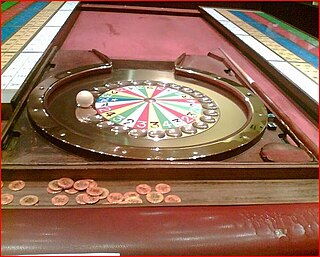 W
WAn auca is a genre of a story in pictures developed mainly in Catalonia.
 W
WBotifarra is a point trick-taking card game for four players in fixed partnerships played in Catalonia, in the northeast of Spain, and parts of Aragon and Castelló province. It is a historical game also played in many parts of Spain, not only in bars and coffee shops. The game is closely related to Manille from which it takes the mechanics, but its rules induce deduction and minimise the effects of luck.
 W
WA botijo, also called búcaro in Egypt, is a traditional porous clay container designed to contain water. The botijo has the property that once filled, it cools the water that it contains, acting as an evaporative cooler.
 W
WThe term Catalan cinema encompasses film productions produced and acted preferably by people from Catalonia. In Spain, it is a subset of Spanish cinema, and includes movies both in Catalan and Spanish.
 W
WThe term Catalanic Community, and the demonym Catalanic, were proposed by Miquel Adlert and other Valencianists as alternative concepts to the Països Catalans and the Catalan nation, as a sole nation, with the intention to define a name that is accepted by all the territories of the Catalan-speaking community. Thus it was expressed his need in a manifest at Serra d'Or. June 1961, no. 6, signed, among others, by Alfons Verdeguer, Xavier Casp, Miquel Adlert, Jaume Bru i Vidal, Alfons Cucó, Rafael Villar and Beatriu Civera:per al dit conjunt de València, Mallorca i Catalunya acceptem la denominació suggerida fa poc per Miquel Adlert Noguerol de "Comunitat Catalànica", on la primera paraula indica el tipus d'unió que existia i és el que acceptem, i la segona afirma la unitat de llengua i cultura, alhora que ens dóna un gentilici comú i nou per a tots, que conservem així els antics, junt amb les denominacions de sempre per a les nostres terres".
 W
WCobi was the official mascot of the 1992 Summer Olympics and Petra was the official mascot of the 1992 Summer Paralympics, both held in Barcelona, Spain.
 W
WJulepe, , is a gambling card game of Spanish origin, similar to the English five-card Loo, and best for six players. It spread rapidly across the Spanish-American countries during the 19th century.
 W
WLe multicolore is a game of chance from France and Catalonia that features characteristics of both roulette and bagatelle. In the game, a ball is rolled into a basin-shaped wheel, which is divided into twenty-five shallow cups. Each cup is assigned one of five colours, with a value ascribed. The game consists in predicting on which colour the ball will rest.
 W
WSaint Palladius of Embrun was a 6th-century bishop of Embrun. Born to a Christian family, he studied under Catulin, bishop of Embrun, who had attended the Council of Épaone in 517. When the Arians and Sigismund of Burgundy opposed the council, Catulin was exiled to Vienne. Palladius accompanied him there, and took the opportunity to extensively study Scripture. Palladius was ordained a priest and, according to legend, gained the gift of prophecy. He is said to have predicted the fall and death of Sigismund. Catulin died around 518, and Palladius would later be elected bishop of Embrun. During his episcopate he built numerous churches, in Chorges, Sauze, and Rama, as well as sanctuaries dedicated to Saint Martin of Tours, and Saints Vincent, Orontius, and Victor, as well as to Genesius of Arles. One source states that Palladius "possessed an exceptional efficacy in obtaining whatever he petitioned God for." Many miracles were attributed to him, and, besides the gift of prophecy, he enjoyed a "mystical familiarity with the angels... [and] successfully defeated the machinations of the devil simply by making the sign of the cross."
 W
WPig slaughter is the work of slaughtering domestic pigs which is both a common economic activity as well as a traditional feast in some European and Asian countries.
 W
WA pubilla in ancestral Catalan tradition was the female that would inherit the whole rural estate in the absence of a brother.
 W
WThe Renaixença, or Catalan Renaissance, was an early 19th-century romantic revivalist movement in Catalan language and culture, akin to the Galician Rexurdimento or the Occitan Félibrige movements. The movement dates to the 1830s and 1840s, but lasted into the 1880s, when it branched out into other cultural movements. Even though it primarily followed a romantic impulse, it incorporated stylistic and philosophical elements of other 19th century movements such as Naturalism or Symbolism. The name does not indicate a particular style, but rather the cultural circumstances in which it bloomed.
 W
WSaint George's Day is traditionally celebrated in several regions of Spain.
 W
WEls Segadors is the official national anthem of Catalonia, nationality and autonomous community of Spain.
 W
WThe Charitable Society of the Natives from Catalonia, also known as the Casal Català or the Beneficencia Catalana, is a charity founded by Catalan immigrants in Havana, Cuba, in 1840.
 W
WThere are quite a number of festivals and traditions in Catalonia (Spain). While most are of ancient origin, certain traditions are of relatively recent introduction. There are also some that are common to the whole Catalan society, but others are relevant only to a particular location. Generally, locals welcome outsiders to share with them in their celebration.
 W
WThe Xicolatada is a traditional festival celebrated in the village of Palau-de-Cerdagne in Languedoc-Roussillon. It is celebrated yearly on 16 August, and has been for over 300 years.